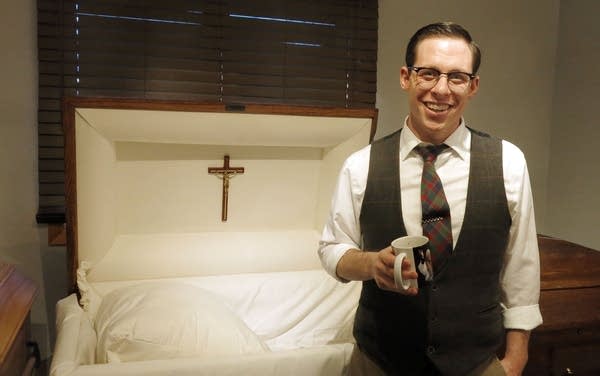As Minnesota ages, need for morticians becomes a life and death issue
Conversations with a young mortician in rural northwestern Minnesota reveal the challenges

Victor Sweeney has been a funeral director in Warren, Minn. for almost six years. The funeral home stocks a few, mostly simple caskets. Warren is too far north to ship in caskets for each funeral.
John Enger | MPR News
Go Deeper.
Create an account or log in to save stories.
Like this?
Thanks for liking this story! We have added it to a list of your favorite stories.


